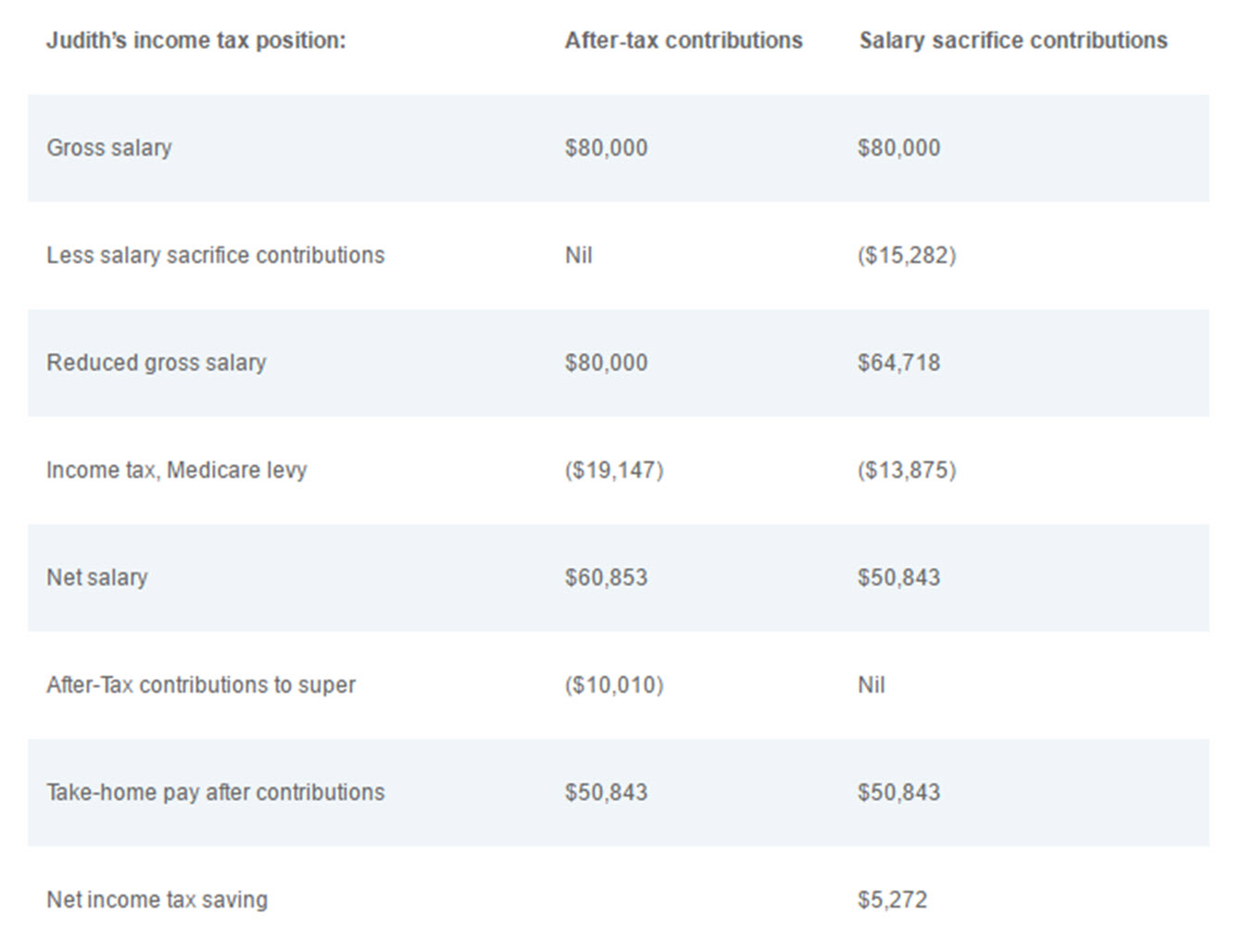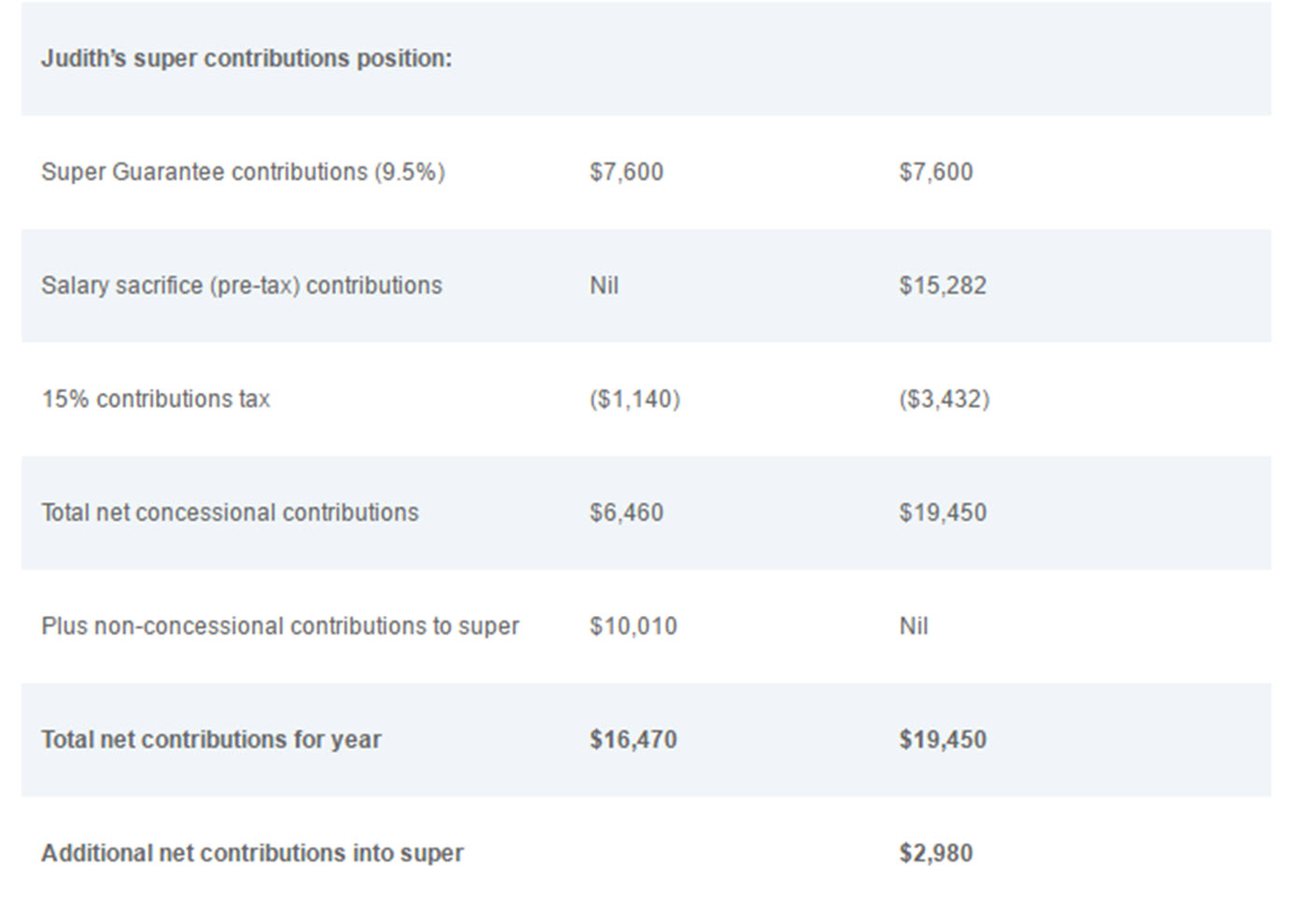THE VIRTUE OF (SALARY) SACRIFICE
When you make a sacrifice, you’re usually giving something up with the expectation of future gain.
Salary sacrificing into your super is no different—you’re giving up ready access to your money in your take-home pay. But in return you’re boosting your retirement savings and saving on tax.
You can pay extra cash into your super from your pre-tax salary at the concessional 15% rate of tax1 —up to a limit (or cap) of $30,000 for 2014/15 (or $35,000 if you’re 49 or over). That’s a considerable tax saving for most people on their usual marginal tax rate.
Get your regular payment in place
With a new financial year fast approaching it’s a great time to get your salary sacrifice arrangement in place – on top of the regular super guarantee payments made by your employer. This way you’ll be able to maximise your concessional contributions and minimise your tax burden over the course of the next financial year.
Boost super, save on tax
Let’s look at how salary sacrifice could work in practice.
Judith, aged 50, is a teacher earning $80,000 a year. She currently puts $385 per fortnight into her online savings account (approximately $10,010 a year) and wants to start building up her retirement savings. She is considering whether to make:
- an after-tax contribution into superannuation of $10,010 a year, or
- an equivalent pre-tax (salary sacrifice) contribution.
After-tax contributions v salary sacrifice for Judith (2015/16)
In both scenarios, Judith’s take-home pay is the same. But by salary sacrificing into super, Judith can increase her super contributions for the year by $2,980, even after taking the 15% contributions tax into account.
Salary sacrifice checklist
Salary sacrifice isn’t without pitfalls. You’ll need to make sure you don’t unintentionally go over your contributions cap or reduce your other entitlements.
Here’s a handy checklist to make sure that you’ve ticked all the boxes.
1. Make sure that you can salary sacrifice
- Does your employer allow salary sacrifice?
- Are you under age 75?
2. Complete your employer’s standard salary sacrifice paperwork
- You can’t salary sacrifice income already earned.
- Plan ahead to sacrifice bonus and leave payments.
3. Make sure your other entitlements aren’t affected
Check with your employer:
- how your super guarantee is calculated
- the definition of ‘salary’ used to work out your payments.
4. Monitor your concessional contributions cap
Check all concessional contributions for the financial year. These include:
- compulsory contributions paid by your employer – such as the super guarantee
- contributions from a previous role within that financial year
- pre-tax contributions on top of your super guarantee
- administration fees and insurance premiums paid by your employer
- contributions allowed as an income tax deduction – such as contributions you make if you are self-employed
- notional taxed contributions if you are a member of a defined benefit fund
5. Get the agreement in writing
- Every employer is different. Make sure you know when your contributions are paid within the financial year so you don’t go over your concessional contributions cap.
6. Set up a notification
- Download the AMP app and set up an alert to notify you when your payments reach your account.
So don’t delay. Make sure you get your salary sacrifice arrangement in place by 1 July to take full advantage of the government’s tax concessions for the next financial year. You’ll soon see the difference when you next look at your super balance.
At Tailored Lifetime Solutions, we can help you plan your salary sacrifice strategy and keep track of your contributions cap. Call us on (03) 9851 0300 to arrange a meeting with one of our Financial Planners.
1 Or 30% if you earn more than $300,000 a year.










